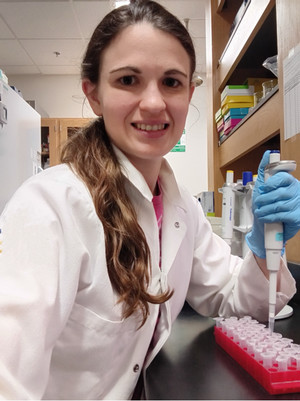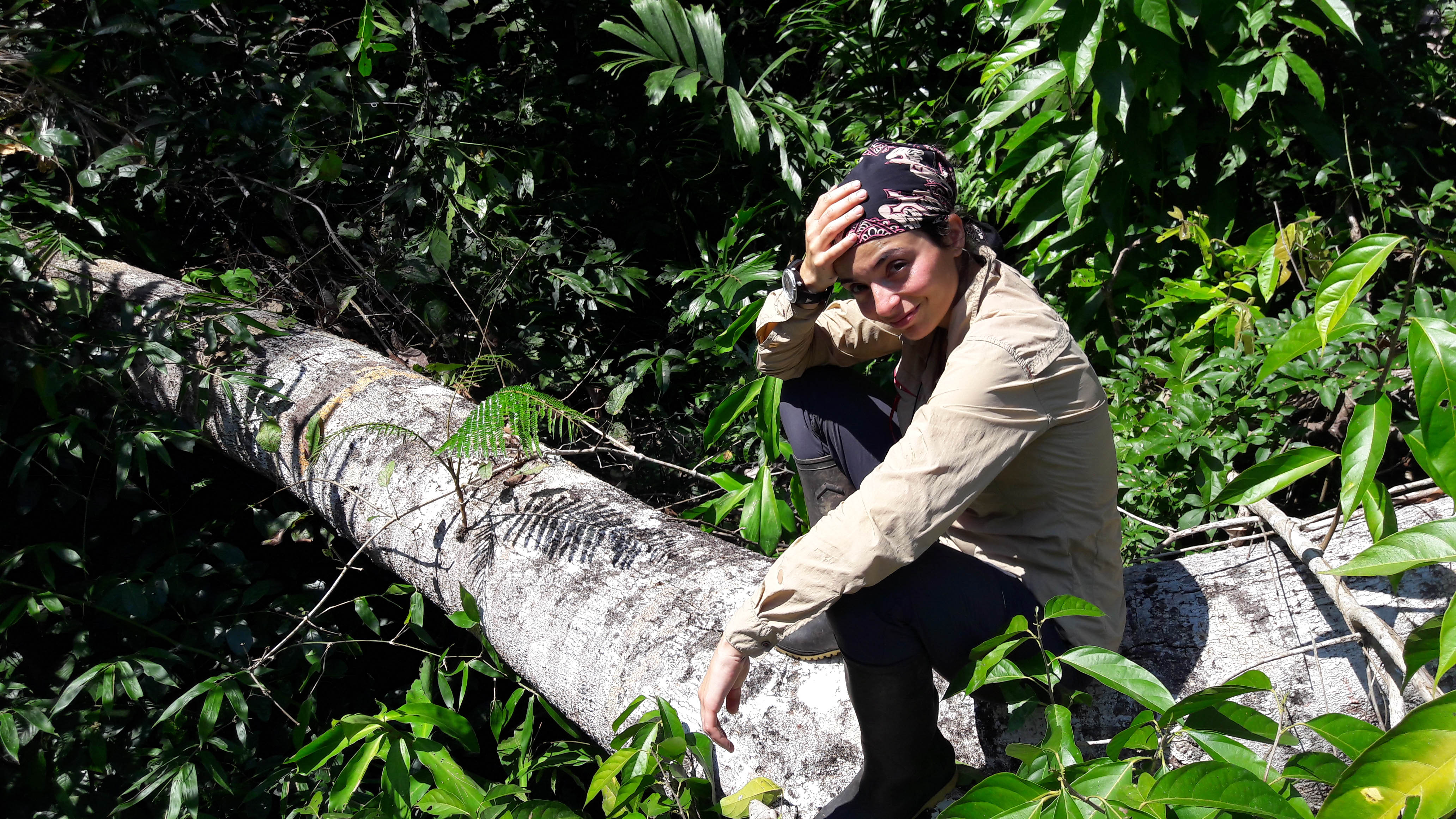Graduate Student Spotlight:

Amanda Rawstern is a 4th year Biology PhD candidate mentored by Dr. Michelle Afkhami.
Microorganisms are key drivers of many processes including organic matter decomposition, nutrient cycling, maintenance of community biodiversity, promotion of plant health and productivity, and plant resilience to climate change. Understanding what shapes microbiomes and their interactions with plants is therefore critical for maintaining healthy natural ecosystems and sustainable agricultural practices.
Amanda’s dissertation research brings together integrative, cross-disciplinary approaches from microbiology, ecology, and molecular biology to better understand microbiome assembly and function in natural and agro-ecosystems. Her research experimentally demonstrated for the first time that highly connected central taxa within soil microbiome networks are keystone species in their natural environments, enhancing biodiversity and recruitment of other highly connected taxa, and influencing the trajectory of microbiome composition during early succession. She has also investigated how multiple mutualists interact with plant genotype to impact plant phenotypic responses to pathogens. She is using this information to develop an ecological and mechanistic understanding of how microbiomes form and underpin plant health and for future genome-led breeding efforts to reduce the susceptibility of plants to emergent diseases.
Amanda has recently been awarded over $140,000 as a USDA-NIFA predoctoral fellow. This prestigious fellowship will fund the remainder of her dissertation work to examine the functional and stability properties of root microbiomes in domesticated and wild citrus. Amanda will work with collaborators in Florida and California to characterize citrus microbiomes across a domestication gradient and identify candidate plant gene targets that promote beneficial rhizosphere assembly.
In addition to her research achievements, Amanda has also been an active member of the University of Miami Biology department where she has strived to increase diversity, equity, and inclusion in STEM and serve her community as the current Biology Graduate Student Organization (BGSO) President. Amanda recently served as the first BioReach Graduate Student Director, helping organize outreach experiences for nearly 1000 middle school students to participate in hands-on activities from UM faculty, postdocs, and graduate students. She has also worked with the Science Made Sensible Program to mentor UM undergraduates in the development of interactive, hypothesis-driven lesson plans which are then used to engage local middle school students.

Graduate student, Belen Fadrique (Feeley Lab), explores forest dynamics in the Andes-Amazon region
The tropical forests of the Andes-Amazon region are among the most important ecosystems on Earth. Not only are these forests an epicenter for global biodiversity, they also regulate global biogeochemical cycles (e.g. carbon and hydrological cycles) and provide a range of ecosystem services for billions of people (water provision, erosion prevention). My research in Ken Feeley’s Lab focuses on understanding forest dynamics in the Andes-Amazon region at two different scales. At the pan-Andean scale, I research shifts in forest composition caused by changes in species’ geographical ranges due to climate change. In other words, I study altitudinal migrations of plant species. At an organismal scale, I investigate the role of bamboo as a potential modulator of local and regional forest dynamics.
1- Altitudinal plant migrations
While a handful of studies from tropical montane forests have shown evidence of species migrations and thermophilization (i.e., the increasing abundance of heat-tolerant species), the generalizability of these patterns remains uncertain. Along with a team of international collaborators, I complied databases of forest plot inventories from the subtropical and tropical Andes Mountains to test whether Andean tree communities are changing in composition due to upward plant species migrations.
My studies have found that thermophilization is indeed a widespread phenomenon throughout the Andes. In fact, 70% of the plots we have examined to date showed evidence of upward species migrations and are undergoing thermophilization. However, the thermal composition of the communities appears to be more stable at the highest and mid elevations. The apparent stability of forests at some elevations may be due to the influence of other abiotic or biotic factors controlling tree species distributions, and/or it may reflect the presence of highly specialized plant communities around ecotones (e.g., cloudbase and treeline). Forests throughout the Andes are responding to global warming through compositional shifts that are likely driven by upward species migrations. These shifts in species ranges and community composition can have important impacts on the extinction risks as well as the valuable ecosystem services that these forests provide.
2- Bamboo as a modulator of forest dynamics
The vast majority of studies of tropical forests have focused only on trees and other life forms have been unjustifiably ignored. Bamboo is one group of plant species that has the potential to significantly affect large-scale forest dynamics in the Andes-Amazon region; however, it has been overlooked in most forest studies to date. Bamboos are native species in this region and dominate vast areas of forest, for example, the Bamboo-Dominated Forest in Southern Amazon extends over 160,000 km2 – an area equivalent in size to the state of Florida. Bamboos are strong competitors in forest ecosystems; they are able to dominate both forest canopies and understories.
My research on bamboos takes place across a range of critical tropical habitats, from the lowland Amazonian jungles to the highland Andean cloud forests in Manu National Park, Peru. I use a range of approaches to investigate the interactions between climate and bamboo, and the potential effects of bamboo on forest. More specifically, I am using a combination of plot-based data, functional trait data and remote sensing techniques to understand the role of bamboo in determining forest structure, composition and physiology and how climatic tolerances controls bamboo species distribution.
My preliminary results show that bamboo is a very abundant plant group in the Andes and it can have an important effect on the structure of the surrounding forest. In addition, bamboo gregarious flowering and mortality event exerts an important impact on the water relationships of the Bamboo Dominated Forest in Southwestern Amazon.





